
Discover the Vibrant Heart of Berlin: Friedrichshain
Explore Friedrichshain: Berlin's eclectic neighbourhood brimming with history, vibrant street art, bustling markets, and a nightlife that never sleeps.
Friedrichshain is a lively and eclectic neighbourhood located in the eastern part of Berlin. Known for its dynamic mix of history and modern culture, Friedrichshain offers an array of attractions for tourists. Start your journey by exploring the East Side Gallery, a 1.3-kilometer section of the Berlin Wall adorned with over 100 murals. This iconic landmark serves as a poignant reminder of Berlin's divided past and a symbol of reunification. Stroll along the bustling streets of Boxhagener Platz, where you can immerse yourself in the local culture. The square is surrounded by a variety of cafes, bars, and restaurants, perfect for sampling traditional German fare or international cuisine. On Sundays, be sure to visit the flea market at Boxhagener Platz, where you can find unique souvenirs and vintage treasures. For a taste of Friedrichshain's vibrant nightlife, head to the RAW-Gelände, a former industrial site now transformed into a cultural hub. Here, you'll find a mix of clubs, bars, art galleries, and even a climbing wall. The area comes alive at night, offering a diverse range of entertainment options for visitors. Whether you're interested in history, food, or nightlife, Friedrichshain has something to offer every traveler.
Local tips in Friedrichshain
- Visit East Side Gallery early in the morning to avoid crowds and get the best photos.
- Try local food specialties at one of the many street food vendors around Boxhagener Platz.
- Bring cash, as many smaller shops and market stalls in Friedrichshain may not accept credit cards.
- Wear comfortable shoes, as exploring Friedrichshain involves a lot of walking.
- Check out the event schedule at RAW-Gelände to catch live performances and art exhibitions.
Discover the Vibrant Heart of Berlin: Friedrichshain
Friedrichshain is a lively and eclectic neighbourhood located in the eastern part of Berlin. Known for its dynamic mix of history and modern culture, Friedrichshain offers an array of attractions for tourists. Start your journey by exploring the East Side Gallery, a 1.3-kilometer section of the Berlin Wall adorned with over 100 murals. This iconic landmark serves as a poignant reminder of Berlin's divided past and a symbol of reunification. Stroll along the bustling streets of Boxhagener Platz, where you can immerse yourself in the local culture. The square is surrounded by a variety of cafes, bars, and restaurants, perfect for sampling traditional German fare or international cuisine. On Sundays, be sure to visit the flea market at Boxhagener Platz, where you can find unique souvenirs and vintage treasures. For a taste of Friedrichshain's vibrant nightlife, head to the RAW-Gelände, a former industrial site now transformed into a cultural hub. Here, you'll find a mix of clubs, bars, art galleries, and even a climbing wall. The area comes alive at night, offering a diverse range of entertainment options for visitors. Whether you're interested in history, food, or nightlife, Friedrichshain has something to offer every traveler.
Iconic landmarks you can’t miss
East Side Gallery
Explore the East Side Gallery in Berlin, a vibrant open-air art exhibition that transforms history into a canvas of freedom and creativity.
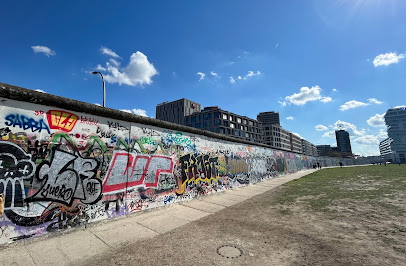
Volkspark Friedrichshain
Explore the lush landscapes and cultural treasures of Volkspark Friedrichshain, Berlin's iconic park perfect for relaxation and recreation.

Märchenbrunnen
Explore the enchanting Märchenbrunnen in Berlin, where fairy tales come to life amidst artful sculptures and serene park surroundings.
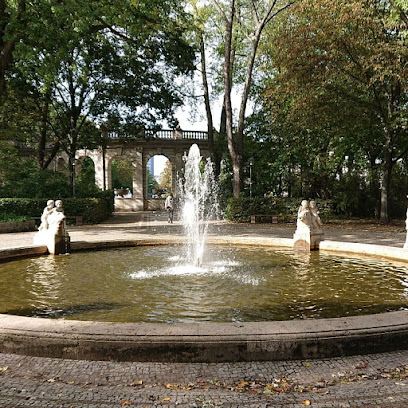
Graffiti Wall of Fame
Explore Berlin's Graffiti Wall of Fame, a vibrant testament to urban creativity and street art culture in the heart of Friedrichshain-Kreuzberg.
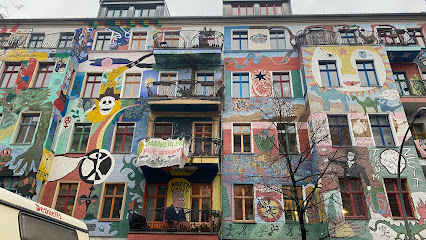
Monument to the International Brigades
Explore the Monument to the International Brigades in Berlin—a striking sculpture honoring the brave volunteers of the Spanish Civil War amidst a vibrant urban backdrop.
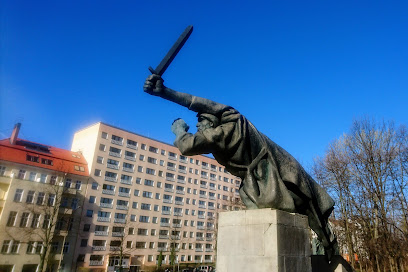
Großer Bunkerberg - Flakturm II G Volkspark Friedrichshain
Uncover Berlin's history at the Großer Bunkerberg - a WWII flak tower nestled in the scenic Volkspark Friedrichshain.
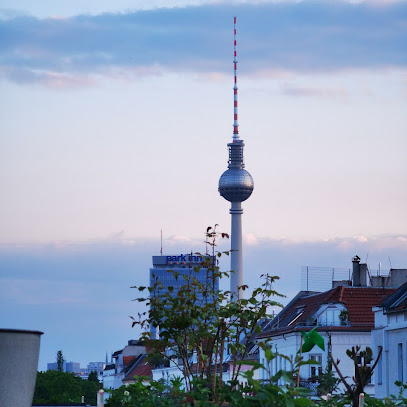
Denkmal Friedrich II. von Preußen
Explore the Denkmal Friedrich II. von Preußen in Berlin, a majestic monument surrounded by lush greenery and rich history, perfect for culture enthusiasts.
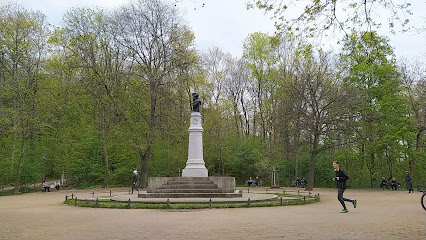
Der Wal von Friedrichshain
Discover Der Wal von Friedrichshain, a unique architectural landmark in Berlin that highlights the city's rich cultural and artistic heritage.
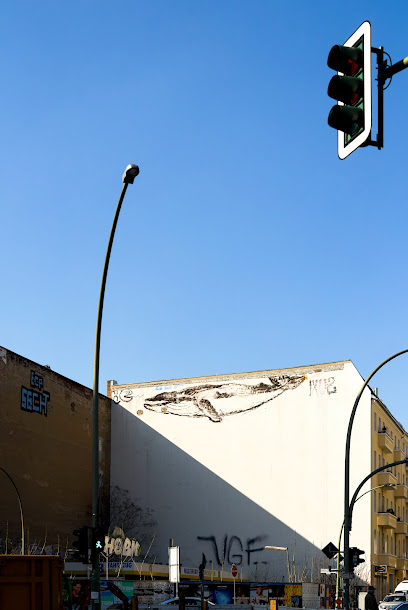
Bersarinplatz
Discover the charm of Bersarinplatz, a historical landmark in Berlin's Friedrichshain, blending rich history with vibrant urban life.
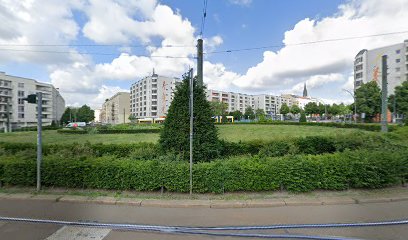
Mural art Wahl
Discover the vibrant Mural Art at Wahl in Berlin, an outdoor gallery showcasing stunning street art that reflects the city's creative spirit.
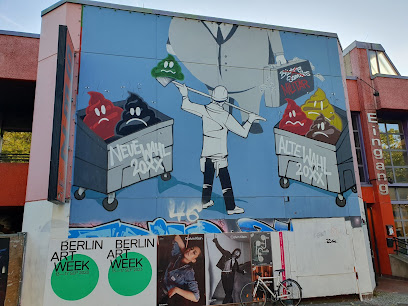
Unmissable attractions to see
Alexanderplatz
Explore the vibrant Alexanderplatz, a historic plaza in Berlin filled with shops, dining, and stunning views from the iconic TV Tower.
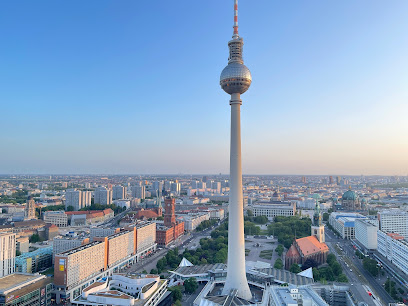
Berlin wall
Discover the Berlin Wall, an enduring symbol of division and resilience, showcasing vibrant art and compelling history in the heart of Berlin.
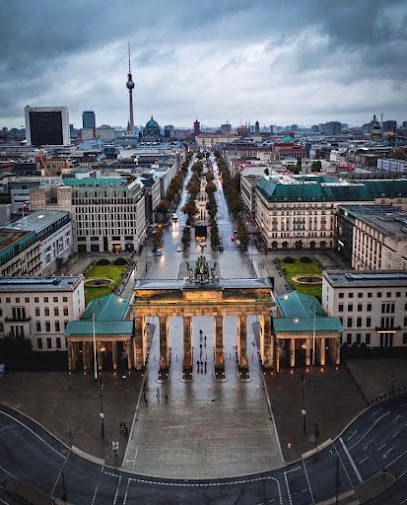
Oberbaum City
Discover the vibrant atmosphere of Oberbaum City in Berlin, where iconic architecture meets eclectic dining and dynamic street art.
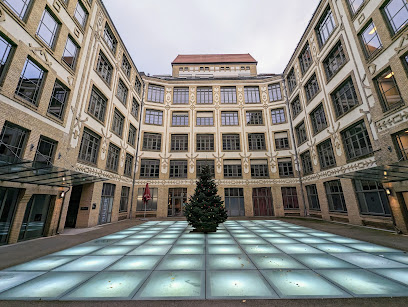
Odyssee berlin
Explore the vibrant art and history at Odyssee Berlin, a must-visit tourist attraction in the heart of Friedrichshain-Kreuzberg.
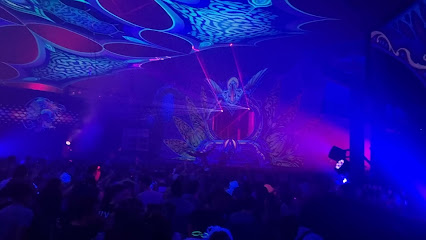
Springbrunnen
Discover the serene beauty of Springbrunnen in Berlin's Friedrichshain-Kreuzberg district, a captivating water fountain perfect for relaxation and photography.
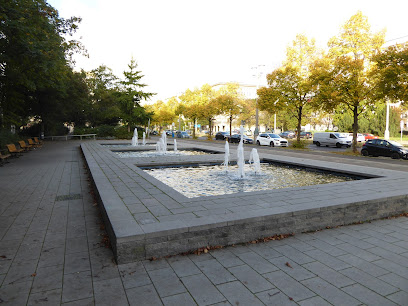
artwerk Berlin
Immerse yourself in contemporary art at Artwerk Berlin, a vibrant hub in Friedrichshain showcasing dynamic exhibitions and engaging workshops.
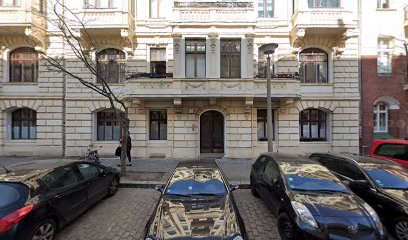
Monkey as Art Judge Mural
Explore the Monkey as Art Judge Mural in Berlin - a whimsical street art piece that captures the city's creative spirit and invites artistic reflection.
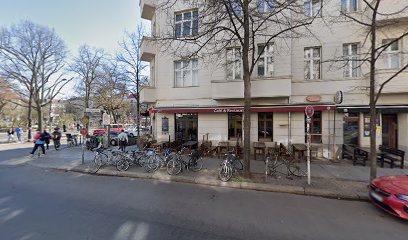
Essential places to dine
A Mano
Discover A Mano: Berlin's premier destination for authentic Italian cuisine and exquisite seafood dishes in a welcoming atmosphere.
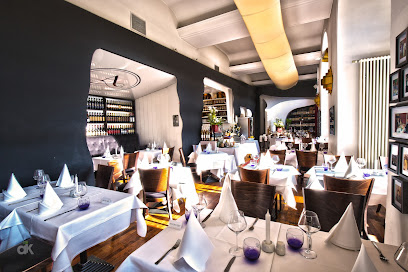
Cafe Datscha
Discover authentic Eastern European flavors at Café Datscha in Berlin's vibrant Friedrichshain district—where comfort meets culinary delight.
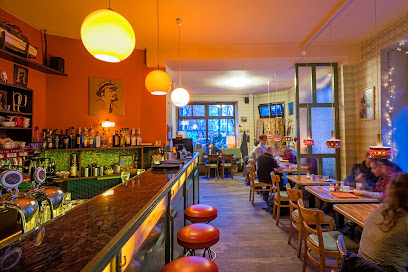
Restaurant Trattoria Portofino
Savor authentic Italian flavors at Trattoria Portofino in Berlin - where every bite transports you to Italy's culinary heart.
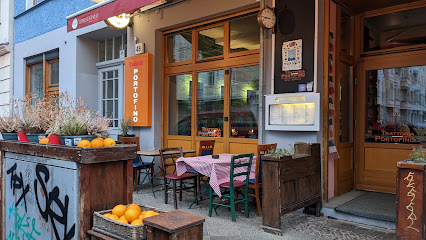
NYOM Restaurant
Discover authentic Vietnamese cuisine at NYOM Restaurant in Berlin's vibrant Friedrichshain-Kreuzberg district.

Restaurant Schneeweiß
Discover authentic Austrian flavors at Restaurant Schneeweiß in Berlin's lively Friedrichshain-Kreuzberg district.
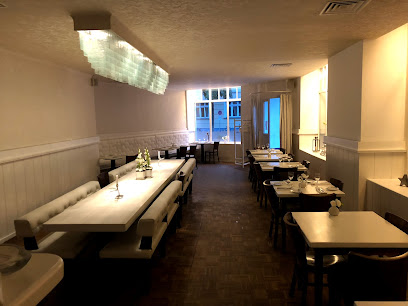
MAMMAM Garküche Street Food aus Vietnam und Thailand
Savor authentic Vietnamese and Thai street food at MAMMAM Garküche in Berlin's vibrant Friedrichshain-Kreuzberg district.
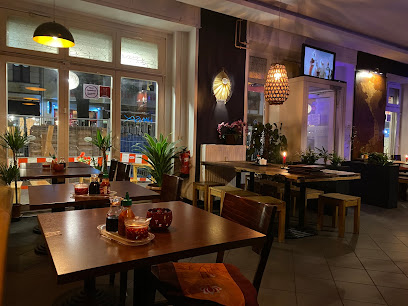
Butterhandlung | Restaurant | Berlin | Friedrichshain | Bar | Club
Discover Butterhandlung: A Unique Vegan Restaurant & Bar Experience in Berlin's Friedrichshain District.
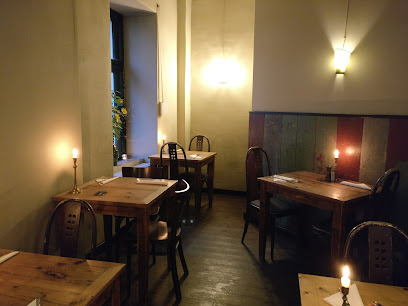
MATANGA - Fusion Tapas & Cocktails
Discover MATANGA in Berlin: A fusion tapas restaurant serving innovative dishes and handcrafted cocktails in a vibrant atmosphere.
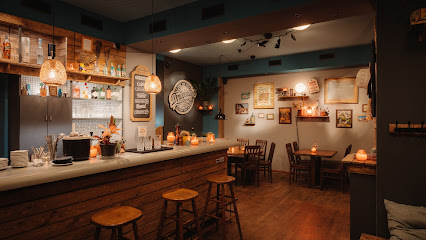
Masteca e Tasi
Experience authentic Italian cuisine at Masteca e Tasi in Berlin's Friedrichshain-Kreuzberg district – where every meal feels like a trip to Italy.
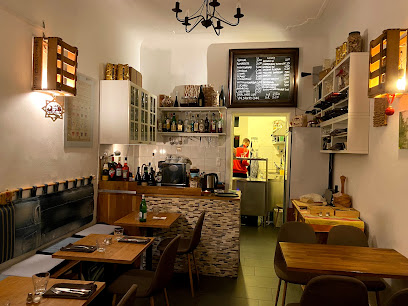
What a Treat Friedrichshain Restaurant-Berlin
Discover culinary excellence at What a Treat Friedrichshain – where local flavors meet international flair in the heart of Berlin.
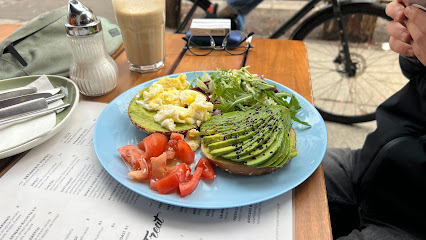
Markets, malls and hidden boutiques
Coexist
Explore Coexist, a unique boutique in Berlin's Friedrichshain-Kreuzberg, offering curated treasures and local artistry.

HEY ALEX
Explore the unique charm of Hey Alex, a boutique in Berlin offering stylish fashion accessories, clothing, and distinctive gifts.
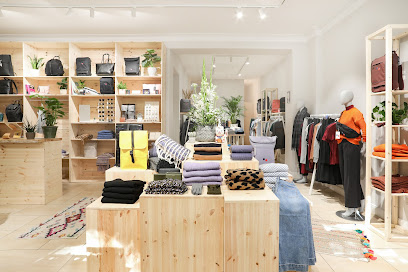
Broke + Schön Fhain
Explore Berlin's creative heartbeat at Broke + Schön Fhain, where unique gifts and fashion meet local artistry in a charming boutique setting.
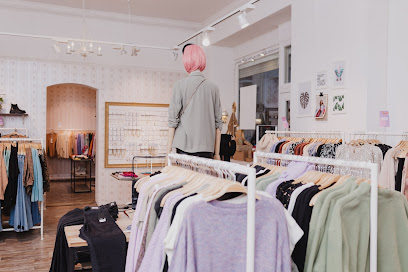
Berliner Modeinstitut
Discover the unique charm of vintage fashion and accessories at Berliner Modeinstitut, a must-visit boutique in Berlin's vibrant Friedrichshain district.
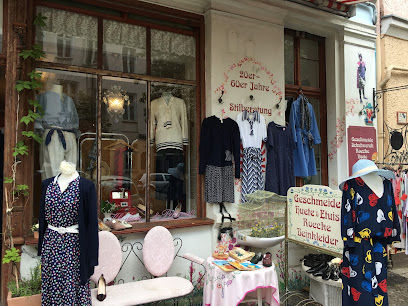
SALT BERLIN
Discover unique vintage clothing at SALT BERLIN, where sustainable fashion meets retro style in the heart of Friedrichshain.
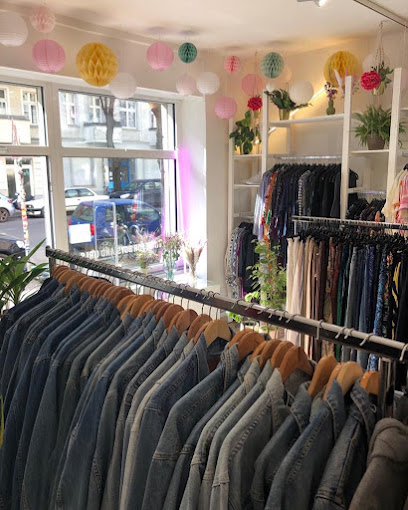
Peccato
Explore Peccato in Berlin for unique, stylish clothing that captures the essence of contemporary fashion in a vibrant atmosphere.
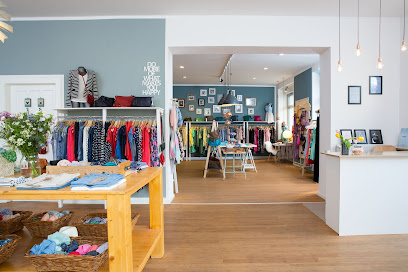
Freak Out
Explore Freak Out in Berlin for unique gifts and fashion accessories that embody the city's creative flair and artistic spirit.
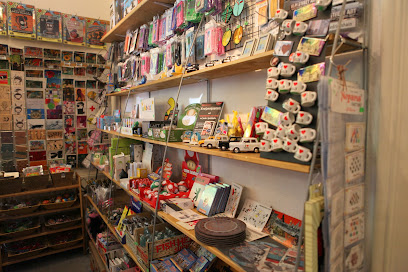
THIS CITY ROCKS, Berlin Design Shop
Explore a creative oasis in Berlin with unique gifts and souvenirs at THIS CITY ROCKS, where local design meets vibrant culture.
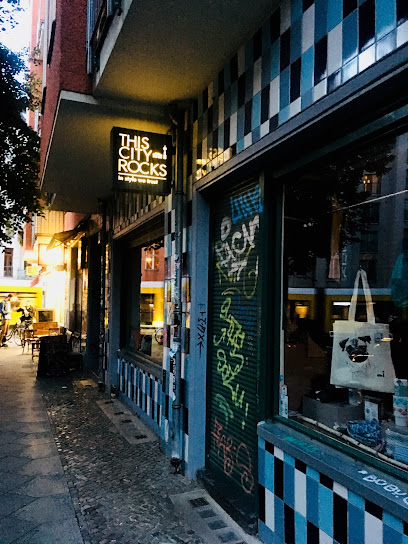
GruenBergerShop Berlin
Explore the eclectic charm of GrünBergerShop Berlin, where antique treasures await to add character to your home.
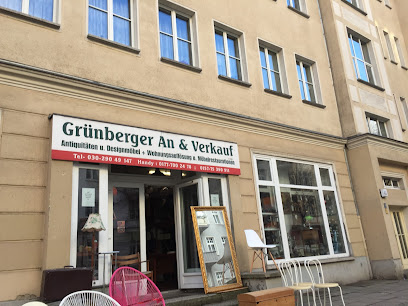
Fetisch Laden
Explore Fetisch Laden, a quirky clothing store in Berlin offering unique and exotic wear for a distinctive fashion experience.
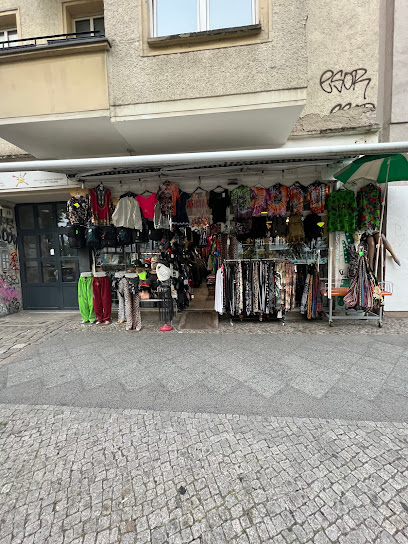
Essential bars & hidden hideouts
Luft und Liebe Bar Berlin
Experience the vibrant nightlife of Berlin at Luft und Liebe Bar, where creative cocktails meet cozy atmospheres in Friedrichshain.
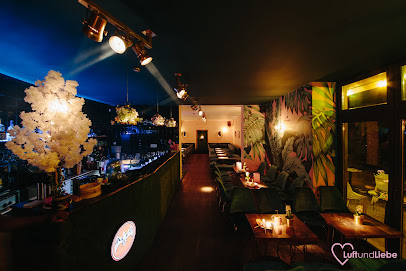
MacLaren's Pub
Discover the warmth and charm of MacLaren's Pub in Berlin, where hearty dishes and a vibrant atmosphere await every visitor.
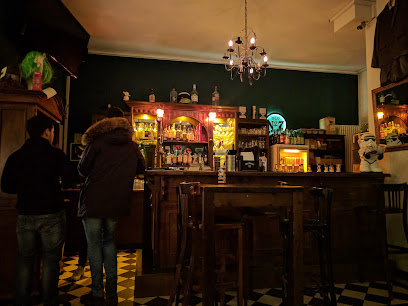
Krass Böser Wolf
Experience Berlin's nightlife at Krass Böser Wolf, a vibrant bar in Friedrichshain-Kreuzberg, offering a wide selection of drinks and a lively atmosphere.
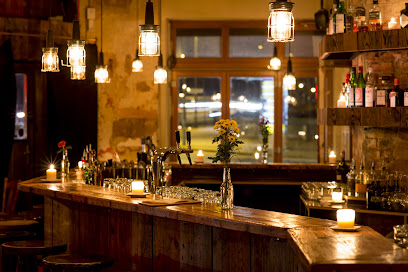
booze bar berlin
Experience the unique cocktails and vibrant atmosphere of Booze Bar Berlin, a must-visit nightlife spot in Friedrichshain-Kreuzberg.
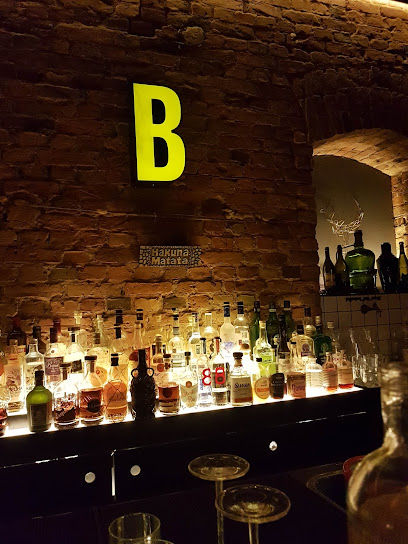
Primitiv Bar - Berlin
Discover the vibrant energy of Primitiv Bar in Berlin, where affordable drinks meet a lively atmosphere in the heart of Friedrichshain.

HOME Bar
Discover the vibrant energy and extensive craft beer selection at HOME Bar, a popular hotspot in Berlin's Friedrichshain-Kreuzberg.
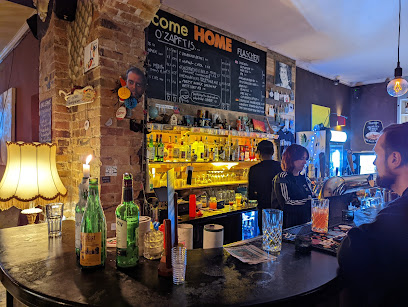
Goldfisch Bar
Experience the vibrant cocktail scene at Goldfisch Bar in Berlin, known for its innovative drinks and lively atmosphere, perfect for nightlife lovers.
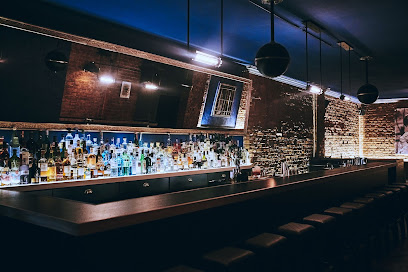
Sohnemann Bar
Sohnemann Bar: A vibrant cocktail haven in Berlin's Friedrichshain-Kreuzberg, perfect for nightlife enthusiasts and social butterflies.
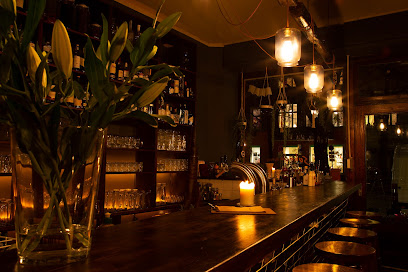
Kaia bar
Discover the vibrant cocktail culture at Kaia Bar, a lively hotspot in Berlin's Friedrichshain-Kreuzberg district, perfect for nightlife enthusiasts.
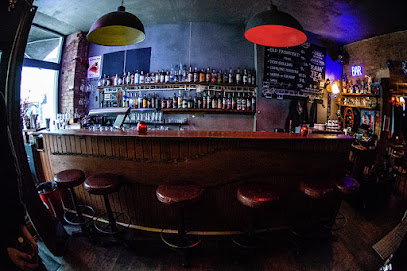
HASE - red rabbit bar
Experience Berlin's vibrant nightlife at HASE - a cozy bar known for its creative cocktails and lively atmosphere in Friedrichshain-Kreuzberg.
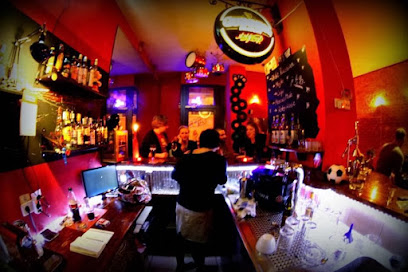
Local Phrases
-
- HelloHallo
[hah-loh] - GoodbyeAuf Wiedersehen
[owf vee-der-zay-en] - YesJa
[yah] - NoNein
[nine] - Please/You're welcomeBitte
[bit-teh] - Thank youDanke
[dahn-keh] - Excuse me/SorryEntschuldigung
[ent-shool-dee-goong] - How are you?Wie geht es dir?
[vee gayt es deer] - Fine. And you?Gut. Und dir?
[goot oond deer] - Do you speak English?Sprichst du Englisch?
[shprikhst doo eng-lish] - I don't understandIch verstehe nicht
[ikh fer-shteh-eh nikht]
- HelloHallo
-
- I'd like to see the menu, pleaseIch möchte bitte die Speisekarte sehen
[ikh merkh-teh bit-teh dee shpy-ze-kahr-teh zay-en] - I don't eat meatIch esse kein Fleisch
[ikh es-se kine flysh] - Cheers!Prost!
[prohst] - I would like to pay, pleaseIch möchte bitte zahlen
[ikh merkh-teh bit-teh tsah-len]
- I'd like to see the menu, pleaseIch möchte bitte die Speisekarte sehen
-
- Help!Hilfe!
[hil-feh] - Go away!Geh weg!
[gey vehg] - Call the Police!Rufe die Polizei!
[roo-fee dee poh-lee-tsay] - Call a doctor!Rufe einen Arzt!
[roo-fee igh-nen ahrts] - I'm lostIch habe mich verirrt
[ikh hah-beh meekh fer-eert] - I'm illIch bin krank
[ikh bin krahnk]
- Help!Hilfe!
-
- I'd like to buy...Ich möchte ... kaufen
[ikh merkh-teh ... kow-fen] - I'm just lookingIch schaue nur
[ikh shou-eh noor] - How much is it?Wie viel kostet es?
[vee feel koh-stet es] - That's too expensiveDas ist zu teuer
[dahs ist tso toy-er] - Can you lower the price?Kannst du den Preis senken?
[kahnst doo den prees zehn-ken]
- I'd like to buy...Ich möchte ... kaufen
-
- What time is it?Wie spät ist es?
[vee shpayt ist es] - It's one o'clockEs ist ein Uhr
[es ist ighn oor] - Half past (10)Halb elf
[halb elf] - MorningMorgen
[mohr-gn] - AfternoonNachmittag
[nahk-mit-tahk] - EveningAbend
[ah-bnt] - YesterdayGestern
[geh-stern] - TodayHeute
[hoy-teh] - TomorrowMorgen
[mohr-gn] - 1Eins
[ighns] - 2Zwei
[tsvay] - 3Drei
[drigh] - 4Vier
[feer] - 5Fünf
[foontf] - 6Sechs
[zeks] - 7Sieben
[zee-bn] - 8Acht
[ahkt] - 9Neun
[noyn] - 10Zehn
[tsehn]
- What time is it?Wie spät ist es?
-
- Where's a/the...?Wo ist ...?
[vo ist] - What's the address?Was ist die Adresse?
[vas ist dee ah-dreh-say] - Can you show me (on the map)?Kannst du mir zeigen (auf der Karte)?
[kahnst doo meer tsay-gen (ouf der kar-teh)] - When's the next (bus)?Wann kommt der nächste (Bus)?
[vahn kommt der nekhs-te (boos)] - A ticket (to ....)Eine Fahrkarte (nach ....)
[igh-nuh fahr-kahr-teh (nahkh)]
- Where's a/the...?Wo ist ...?
History of Friedrichshain
-
Friedrichshain began as a working-class neighborhood in the 19th century, named after the Friedrichshain park, which was established in 1840. This area saw a rapid increase in population due to the industrialization of Berlin, attracting workers to factories and manufacturing hubs surrounding the region. The architecture of this period is characterized by typical Berlin tenement buildings, reflecting the socio-economic conditions of the time.
-
In the late 19th and early 20th centuries, Friedrichshain became a hotspot for social movements and political activism. The neighborhood was home to a vibrant socialist and workers' movement, which culminated in the establishment of various labor organizations and political parties. The legacy of this activism is evident in the area’s cultural fabric, including the iconic East Side Gallery, a segment of the Berlin Wall that has been transformed into an open-air gallery showcasing political art.
-
During World War II, Friedrichshain suffered extensive damage from Allied bombings. Post-war, the neighborhood was part of East Berlin within the German Democratic Republic (GDR). Reconstruction efforts led to the establishment of large housing estates, reflecting the socialist ideals of the time. The area was marked by state control and propaganda, with the architecture representing the GDR's vision for urban development.
-
The fall of the Berlin Wall in 1989 marked a significant turning point for Friedrichshain. The reunification of Germany led to a wave of gentrification, with artists, young professionals, and new businesses moving into the area. This transformation has resulted in a vibrant cultural scene, with numerous bars, clubs, and art spaces, making Friedrichshain a sought-after destination for both locals and tourists.
-
Today, Friedrichshain is known for its eclectic mix of cultures and lifestyles. The neighborhood is characterized by street art, music festivals, and a lively nightlife, particularly around the famous Simon-Dach-Strasse. The cultural diversity is also reflected in various festivals, markets, and community events that celebrate both its historical roots and contemporary artistic expressions.
Friedrichshain Essentials
-
Friedrichshain is easily accessible from various parts of Berlin. If you are arriving from Berlin Brandenburg Airport (BER), take the regional train (RE7 or RB14) to Ostbahnhof station, which is just a short tram ride away from Friedrichshain. From the city center, take the U-Bahn (U5) to Frankfurter Tor or the S-Bahn (S3, S5, S7, S9) to Ostbahnhof. Buses also connect Friedrichshain to other neighbourhoods, with lines 240 and 347 running frequently.
-
Friedrichshain is well-connected by public transportation. The U-Bahn stations, such as Frankfurter Tor and Samariterstraße, provide quick access to the rest of Berlin. Trams, particularly the M10 line, run frequently and connect you to popular areas like Kreuzberg and Prenzlauer Berg. Bicycles are a popular way to explore the neighbourhood, with many bike rental shops available. You can also use ride-sharing apps or taxis for convenience.
-
Friedrichshain is generally safe for tourists; however, like any urban area, it is wise to remain vigilant, especially at night. Areas around the Warschauer Straße station can attract some undesirable activity, so it is advisable to avoid walking alone late at night in poorly lit areas. Keep your belongings secure and be cautious in crowded places to avoid pickpocketing.
-
In case of emergency, dial 112 for fire and medical assistance, or 110 for police. Familiarize yourself with the location of the nearest hospitals and police stations. The Vivantes Hospital in Friedrichshain is equipped to handle emergencies. It's also a good idea to have travel insurance that covers medical emergencies. Pharmacies are available throughout the neighbourhood for minor health issues.
-
Fashion: Do wear comfortable clothing and shoes, as you’ll likely be walking a lot. Don't wear overly flashy outfits, as they may draw unwanted attention. Religion: Do respect local customs, especially in places like the East Side Gallery. Public Transport: Do validate your tickets before boarding and be courteous to fellow passengers. Don't eat or drink on public transport. Greetings: Do greet with a friendly 'Hallo' or 'Guten Tag'. Don't engage in overly loud or disruptive behavior. Eating & Drinking: Do try local beers and street food, particularly in the Boxhagener Platz area. Don’t leave a tip that is too small, as service is generally included, but rounding up is appreciated.
-
To experience Friedrichshain like a local, visit the weekly Boxhagener Platz market for fresh produce and artisanal goods. Explore the numerous street art pieces hidden in alleys, and take a stroll along the Spree River, especially at sunset. Check out local bars and cafés for a taste of the vibrant nightlife, and don’t hesitate to strike up a conversation with locals, as they often have interesting stories and recommendations.
Trending Landmarks in Friedrichshain
Nearby Cities to Friedrichshain
-
Things To Do in Potsdam
-
Things To Do in Szczecin
-
Things To Do in Leipzig
-
Things To Do in Dresden
-
Things To Do in Rostock
-
Things To Do in Poznan
-
Things To Do in Lubeck
-
Things To Do in Erfurt
-
Things To Do in Hannover
-
Things To Do in Karlovy Vary
-
Things To Do in Hamburg
-
Things To Do in Prague
-
Things To Do in Wroclaw
-
Things To Do in Hradec Králové
-
Things To Do in Plzeň











